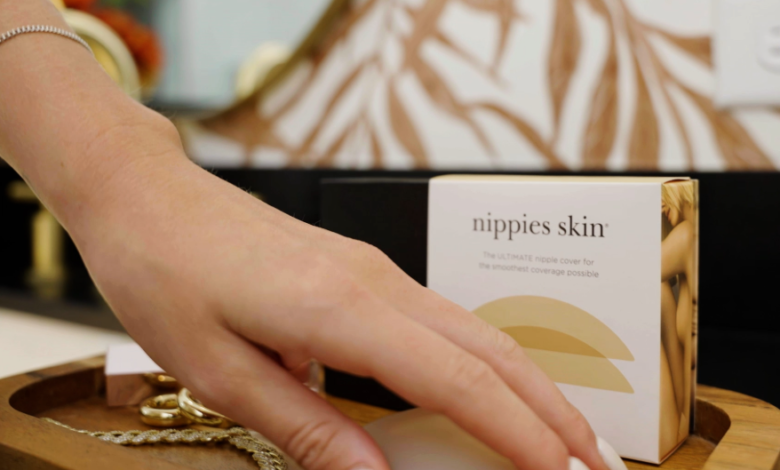Pasties Nipple Cover Guide How to Choose and Wear Them Comfortably

Pasties nipple covers are small adhesive pieces designed to discreetly cover the nipples, allowing individuals to go braless while maintaining coverage and comfort. They come in various shapes, sizes, and materials, including reusable silicone and fabric options, catering to different needs from everyday wear to special occasions.
They provide a simple and effective solution to prevent nipple exposure under sheer, strapless, or backless clothing without the need for a traditional bra. Many modern pasties are made with skin-safe, hypoallergenic materials and offer water- and sweat-resistant features for reliable wear.
Whether used for fashion, comfort, or specific outfit requirements, pasties nipple covers give freedom and confidence by combining practicality with discreet protection. Their versatility makes them a popular choice for those seeking a minimalist approach to support and coverage.
Understanding Pasties Nipple Covers
Pasties nipple cover provides discreet coverage and comfort for those seeking an alternative to traditional bras. They vary in design, material, and adhesive strength, influencing their use and suitability. Understanding these factors helps in selecting the right product for different needs and occasions.
Types of Pasties Nipple Covers
Pasties nipple covers come in several main types, each designed for different levels of coverage and wear duration.
- Disposable pasties are single-use and often come pre-loaded with adhesive. They suit occasional wear, such as special events.
- Reusable pasties feature silicone or fabric and use less aggressive adhesives, allowing multiple uses after cleaning.
- Decorative pasties include embellishments like sequins or lace, often worn for aesthetic purposes or performance.
- Invisible pasties are thin and skin-colored, designed for subtle concealment under sheer or tight clothing.
Each type addresses particular needs, from modesty and comfort to fashion and functionality.
Materials and Fabrics Used
Pasties are made from a variety of materials chosen for comfort, durability, and skin compatibility. Common materials include:
- Silicone, favored for its natural feel, flexibility, and reusable nature. It molds closely to the skin.
- Fabric, such as cotton or nylon, often paired with adhesive backing or worn with adhesive tape. Fabric pasties tend to breathe better but might be less smooth under tight clothing.
- Foam offers lightweight coverage but is usually disposable.
- Medical-grade adhesives are used to reduce irritation and enhance secure attachment on sensitive skin.
Material choice affects texture, breathability, and longevity, impacting comfort and discretion.
See also: Simplified Strategies for Bookkeeping Success 8553927811
How Pasties Nipple Covers Work
Pasties adhere directly to the nipple and surrounding area, creating a smooth surface to prevent nipple show-through. Most use sticky back adhesives or require separate adhesive tapes.
They function by:
- Providing coverage without the support of a bra.
- Reducing fabric friction against sensitive skin.
- Allowing freedom of movement and different clothing options, including backless or sheer dresses.
Proper application usually involves clean, dry skin and careful placement for comfort and longevity. Some pasties also offer waterproof options for sweat or moisture resistance during extended wear.
Choosing and Using Pasties Nipple Covers
Selecting and wearing pasties nipple covers involves attention to size, shape, and material to ensure comfort and discreet coverage. Proper application and removal techniques protect the skin and maximize wear time.
Selecting the Right Size and Shape
Pasties must fully cover the nipple and areola to avoid visible outlines through clothing. Sizes vary, so choosing a diameter that matches the wearer’s anatomy is essential.
Shapes include circular, petal-shaped, or custom-contoured designs. Petal or oval shapes may provide smoother edges that blend better under certain garments, especially tight or sheer tops.
Color is also critical. Pasties should closely match the wearer’s skin tone to remain discreet. Skin-tone or nude shades in fabric or silicone materials are common for this reason. Some pasties come in clear or slightly tinted adhesives for versatility.
Application Tips for Best Results
Skin should be clean, dry, and free of lotions before applying pasties. Any moisture or oils reduce adhesion, causing the covers to peel off prematurely.
Peeling off the backing carefully prevents damaging the adhesive layer. Center the pastie over the nipple and press firmly, smoothing edges to avoid wrinkles or lifting.
To increase longevity, some users lightly warm silicone pasties in their hands before applying to improve stickiness. Avoid touching the adhesive surface with fingers to maintain its tackiness.
For longer wear or physical activity, waterproof or medical-grade adhesive pasties offer stronger hold and sweat resistance.
Removal and Skin Care
Gently removing pasties is crucial to avoid skin irritation. Slowly peeling from the edges while supporting the surrounding skin reduces discomfort and prevents damage.
After removal, any adhesive residue can be removed with warm water or gentle cleansing wipes formulated for sensitive skin. Avoid harsh scrubbing.
Moisturizing the area afterwards soothes the skin and restores hydration. If irritation occurs, resting the skin for a day or two before reapplying pasties is advisable.
Reusable pasties should be cleaned according to manufacturer instructions to maintain adhesive quality for future use.





